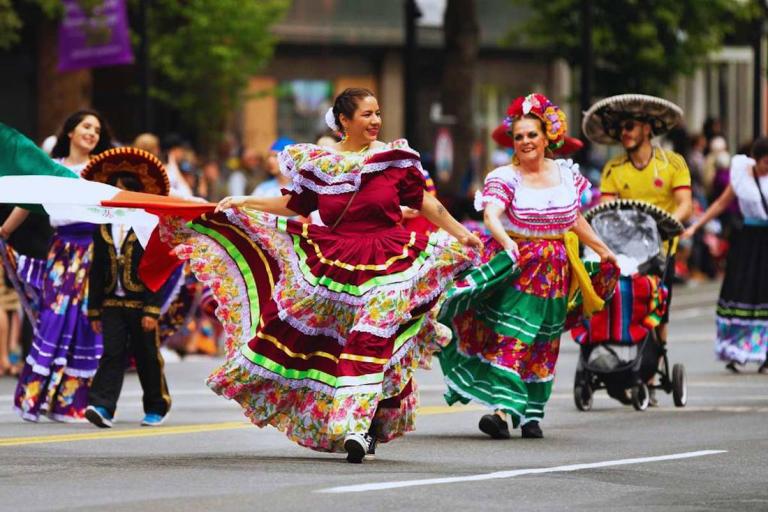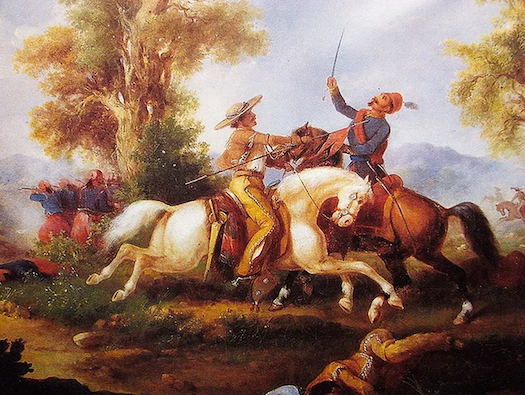
“Many Americans confuse Cinco de Mayo with Mexican independence which is September 16th”

New York, N.Y. – On a crisp May afternoon, Fifth Avenue transforms into a kaleidoscope of color as mariachi music echoes between skyscrapers.
Thousands gather for New York City’s annual Cinco de Mayo parade, a spectacle of folkloric dances and elaborate floats. Yet, few participants fully grasp the holiday’s complex origins—or how a regional Mexican anniversary became a cornerstone of springtime in the U.S.
Historical Roots in Mexico’s Battle of Puebla
Cinco de Mayo marks Mexico’s unlikely 1862 victory over French forces at the Battle of Puebla. Following financial crises and political instability, President Benito Juárez suspended foreign debt payments, prompting Napoleon III to invade.
Outnumbered 2-to-1, General Ignacio Zaragoza led a ragtag army to defend Puebla, delaying French advancement for a year. Though France eventually occupied Mexico until 1867, the battle became a symbol of resistance.
In Mexico, the day remains a minor holiday observed primarily in Puebla with military parades and reenactments. Its significance pales next to September 16’s Independence Day.
“Many Americans confuse Cinco de Mayo with Mexican independence,” says historian Dr. Elena Martínez. “It’s a classic case of cultural diffusion reshaping history.”

Cross-Border Migration to U.S. Celebrations
The holiday’s U.S. prominence began in 20th-century California. During the 1960s Chicano movement, activists reclaimed Cinco de Mayo as a point of pride amid civil rights struggles.
By the 1980s, beer companies like Corona and Modelo capitalized on its festive potential, rebranding it as a mainstream celebration of Mexican culture.
Today, cities like Los Angeles, Chicago, and Denver host sprawling festivals featuring tacos, tequila tastings, and live música.
“For Mexican Americans, it’s about visibility,” explains activist Carlos Méndez. “Our traditions are woven into America’s fabric.” Yet critics argue commercialization overshadows historical context.
In a 2020 Pew Research survey, only 10% of Americans correctly identified the battle’s significance.
Commercialization and Cultural Debates
U.S. Cinco de Mayo generates over $2.7 billion in beer sales annually, according to Nielsen data. Brands like Dos Equis sponsor block parties, while retailers stock sombreros and serapes. This commodification sparks tension.
“Reducing our culture to stereotypes hurts,” says Puebla
native Ana Torres. “It’s not about margarita specials.”
Conversely, some business owners view the hype as economic opportunity. “Our restaurant sees a 40% sales jump,” says José Rivera, who runs a taquería in Phoenix.
Educational Efforts and Future Directions

“It introduces people to authentic dishes like mole poblano.” Cultural organizations walk a tightrope, blending profit with education.
Nonprofits like the Instituto Cultural Mexicano partner with schools to teach Cinco de Mayo’s history.
In 2023, the Smithsonian hosted a webinar series linking the battle to modern immigrant resilience. “We’re shifting from fiesta to formación,” says educator Laura Gómez.
Cities like San Antonio now blend festivities with lectures and art exhibits. Meanwhile, Puebla leverages U.S. interest to boost tourism, offering historical tours of battle sites.
As younger generations push for nuanced celebrations, the holiday’s dual identity—commercial and commemorative—continues evolving.
A Tale of Two Celebrations
Cinco de Mayo’s journey from a regional skirmish to a binational phenomenon underscores the fluidity of cultural identity. In Mexico, it’s a nod to underdog triumph; in the U.S., a vibrant, if contested, embrace of heritage. Whether through parades or pedagogy, its legacy endures as a bridge between nations—and a reminder of history’s living echoes.
Discover local Cinco de Mayo events or visit a cultural center to learn more about its history.
#CincoDeMayo #MexicanHeritage #CulturalCelebration #BattleOfPuebla #USMexicoCulture
Tags: Cinco de Mayo, Mexican history, U.S. celebrations, cultural heritage, Battle of Puebla
Cinco de Mayo: Today, Both a Mexican and American Holiday (May 5, 2025)